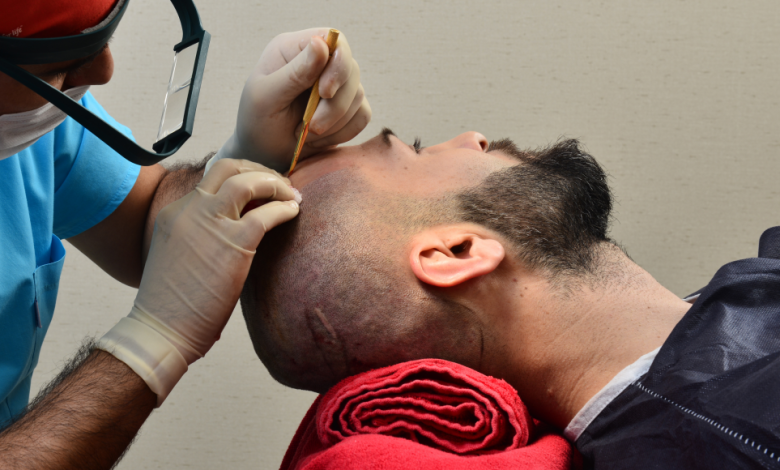10 Things to Avoid After Hair Restoration Procedure

Hair restoration is quickly rising to the top of the list of popular cosmetic operations. FUE, FUT, and Sapphire Hair Transplant all help patients feel more at ease with their decision to have hair restoration surgery. Consequently, more people choose hair transplants because of the natural-looking outcomes these operations may provide. Some products, however, should be avoided if you want to see long-term improvements in the first weeks. After a hair transplant, there are 10 things to avoid.
Remember that you will be anesthetized for your hair transplant process. As a result, you should have someone accompany you home in a vehicle.
Things to Avoid After a Hair Transplant
Driving
Occasionally, hair restoration is carried out while the patient is sedated. If you’ve been given a stimulant, don’t drive for the next 24 hours. Remember to enlist the help of a friend or relative to get you anywhere and back.
Sleeping on Your Back
For the first seven days after therapy, ensure you sleep with your head elevated to reduce swelling. For some patients, a few nights of sleeping with their heads raised is all that is required.
We propose converting your chair into a temporary bed if you notice slight edema. Recliner beds aren’t perfect, but they’re better than sleeping on four pillows for some individuals. Keep your head at a 45-degree angle.
Refusing To Pay Attention To Your Labels
Your prescription and over-the-counter drug labels should be read carefully following a hair transplant treatment. Finally, if your medication’s label instructs you to take it with a meal, do so. A stomach is a risk factor for gastrointestinal problems while taking certain drugs, such as pain relievers.
Forgetting the ice
The difference in altitude is something we’ve previously discussed. Ice should be used for 20-30 minutes above your eyebrows if you see any swelling. As a prophylactic step, it’s a great idea. A few days after hair replacement, it’s worth doing even if you don’t have any swelling. Even if you’re experiencing widespread pain, ice may be all you need to alleviate it.
Having Exercise
In other words, don’t go out and attempt to break your lifting or running record just yet!
You may replace brisk walks, yoga, and tai-chi with your usual fitness program for the first seven days following therapy. You may even ride a bike at a moderate speed for three days following your therapy.
Dyeing hair
If you can’t go four weeks without dyeing your hair, have it done right away before your treatment. Having just had a hair transplant, you should avoid coloring your hair since the harsh chemicals in hair dye may affect the success of the transplanted follicles after the fact. The transplanted follicles remain vulnerable for many weeks following the procedure. They need as much assistance as possible.
Failure to Consume Adequate Amount of Water
Even while we all know how vital water is to our survival, not everyone is aware of just how critical hydration is before and after a transplant. When you’re properly hydrated, you’ll have a better time of it and recover more quickly. In only two weeks, increasing your daily water intake by 10 percent may significantly impact your recovery. You are installing an application on your smartphone that encourages you to take a cup of hot water every hour while awake is highly recommended to ensure that you are receiving enough water.
Check whether you’re receiving enough water by peeing. It should be a pale yellow that is visible to the naked eye.
To presume that you will not lose your hair as a result of the procedure
Hair loss is frequent after hair restoration, but many people are shocked to hear that it is a genuine and acceptable part of the hair growth cycle. Don’t be surprised if your hair starts to fall out in the first two to four weeks after treatment. Your follicles are not harmed. Within three months, these follicles will develop new hair that is healthier, longer, and fuller than before.
Sleeping on your stomach
Most of us nap on our tummies or toss and turn when we sleep. However, during the first week following treatment, you must avoid lying on your stomach or side. It’s not a fine idea to sleep with your new hairline rubbing on your pillow. If you don’t prevent tossing and turning at night, invest in a sleeping bag or sleep on a recliner.
The Application of Ice to the Scalp
You should avoid massaging your new forehead on your pillows, but you should also avoid applying ice directly to your scalp where hair transplants have been performed. It would help if you only used very gentle strokes on your scalp until the 72-hour mark. Keep in mind that scratching an itchy scalp with your fingernails is not a good idea.
Final Thoughts
Hair restoration is quickly rising to the top of the list of popular cosmetic operations. FUE, FUT, and Sapphire Hair Transplant all help patients feel more at ease with their decision to have hair restoration surgery. Consequently, more people choose hair transplants because of the natural-looking outcomes these operations may provide. Some products, however, should be avoided if you want to see long-term improvements in the first weeks.
